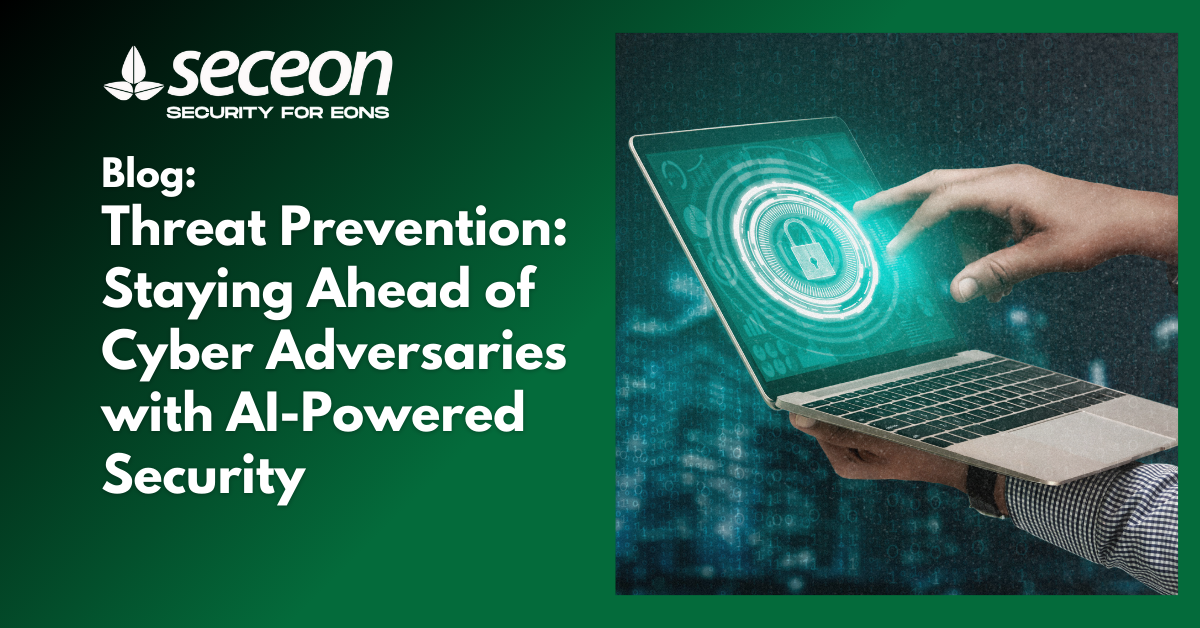
The digital age has transformed how businesses operate, connect, and innovate. But along with this transformation comes an escalating wave of cyber threats. From ransomware attacks crippling critical infrastructure to phishing campaigns targeting remote workers, adversaries are constantly refining their tactics. The question is no longer if an organization will face a cyberattack, but when—and how prepared it will be to stop it.
This is where threat prevention becomes mission-critical. Effective threat prevention means more than just detecting attacks—it’s about anticipating, blocking, and neutralizing threats before they cause damage. At Seceon, we empower enterprises and Managed Security Service Providers (MSSPs) with AI/ML-driven cybersecurity and Dynamic Threat Modeling (DTM), delivering proactive, automated, and cost-effective defense against evolving cyber risks.
Threat prevention refers to the strategies, tools, and technologies used to stop cyberattacks before they penetrate an organization’s defenses. Unlike traditional security, which often focuses on detection and remediation after an incident occurs, threat prevention emphasizes proactive defense—identifying risks early, predicting attacker behavior, and neutralizing threats in real-time.
It combines multiple layers of security, including:
At its core, threat prevention is about staying ahead of adversaries rather than simply reacting to them.
According to industry reports, the global cost of cybercrime is expected to exceed $10 trillion annually by 2025. A single breach can cost millions in lost revenue, regulatory fines, reputational damage, and recovery expenses.
Attackers leverage automation, AI, and social engineering to bypass legacy defenses. Prevention strategies must be equally advanced—using AI/ML to detect and stop novel threats.
The modern workforce is distributed, and data now lives in hybrid and multi-cloud environments. This expands the attack surface and makes threat prevention essential to maintaining resilience.
Industries governed by HIPAA, PCI-DSS, GDPR, or CMMC require demonstrable threat prevention controls to protect sensitive information.
Key Threats Facing Enterprises Today
Each of these requires a prevention-first strategy to block adversaries at the earliest possible stage.
A robust prevention framework integrates multiple layers of defense:
No one is trusted by default—every user, device, and request must be continuously verified.
Machine learning algorithms detect anomalies in user behavior, network traffic, and system activity.
DTM provides contextual, real-time mapping of potential attack vectors, enabling organizations to preemptively close security gaps.
Endpoints, mobile devices, and cloud workloads must be continuously monitored for signs of compromise.
Threat prevention is incomplete without real-time remediation. Automated playbooks ensure threats are neutralized without human delay.
Seceon delivers comprehensive threat prevention through its unified platforms:
As cyberattacks grow more automated and sophisticated, the future of prevention lies in AI-driven, adaptive security platforms. Traditional siloed tools are being replaced by integrated platforms like Seceon aiXDR and aiSIEM, which combine detection, prevention, and response under one roof.
The shift toward Zero Trust, cloud-native security, and automation means organizations can finally stay ahead of adversaries rather than lagging behind. Seceon’s unique AI/ML and DTM-driven approach ensures businesses can embrace digital transformation securely and confidently.
Cyber threats are evolving faster than ever, but with the right prevention strategies, organizations can stop attacks before they begin. Seceon’s AI/ML-powered platforms and Dynamic Threat Modeling (DTM) deliver proactive, real-time, and automated threat prevention—making enterprise-grade security simple, scalable, and affordable. By focusing on visibility, automation, and Zero Trust principles, Seceon helps enterprises and MSSPs eliminate risks, safeguard sensitive data, and maintain business continuity in an increasingly hostile cyber landscape.
